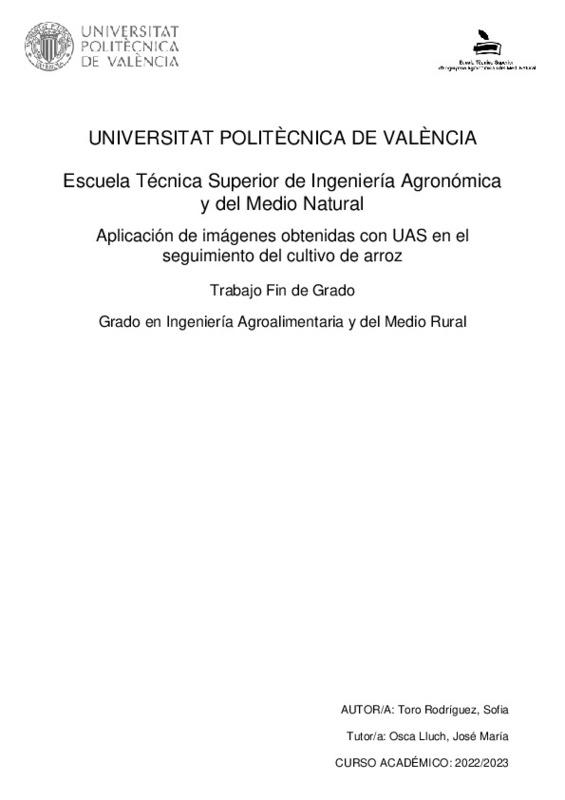JavaScript is disabled for your browser. Some features of this site may not work without it.
Buscar en RiuNet
Listar
Mi cuenta
Estadísticas
Ayuda RiuNet
Admin. UPV
Aplicación de imágenes obtenidas con UAS en el seguimiento del cultivo de arroz
Mostrar el registro completo del ítem
Toro Rodríguez, S. (2023). Aplicación de imágenes obtenidas con UAS en el seguimiento del cultivo de arroz. Universitat Politècnica de València. http://hdl.handle.net/10251/194228
Por favor, use este identificador para citar o enlazar este ítem: http://hdl.handle.net/10251/194228
Ficheros en el ítem
Metadatos del ítem
| Título: | Aplicación de imágenes obtenidas con UAS en el seguimiento del cultivo de arroz | |||
| Otro titulo: |
|
|||
| Autor: | Toro Rodríguez, Sofía | |||
| Director(es): | ||||
| Entidad UPV: |
|
|||
| Fecha acto/lectura: |
|
|||
| Resumen: |
[ES] La agricultura de precisión emplea imágenes satelitales o de vehículos aéreos no tripulados para mejorar la gestión de los cultivos. El objetivo de este trabajo ha sido llevar un seguimiento del cultivo mediante el ...[+]
[EN] Precision agriculture uses satellite or UAV images to improve crop management. The objective of this work has been to monitor the crop by calculating vegetation indices from images obtained with UAS and their possible ...[+]
|
|||
| Palabras clave: |
|
|||
| Derechos de uso: | Reserva de todos los derechos | |||
| Editorial: |
|
|||
| Titulación: |
|
|||
| Tipo: |
|
recommendations
Este ítem aparece en la(s) siguiente(s) colección(ones)
-
ETSIAMN - Trabajos académicos [3541]
Escuela Técnica Superior de Ingeniería Agronómica y del Medio Natural







